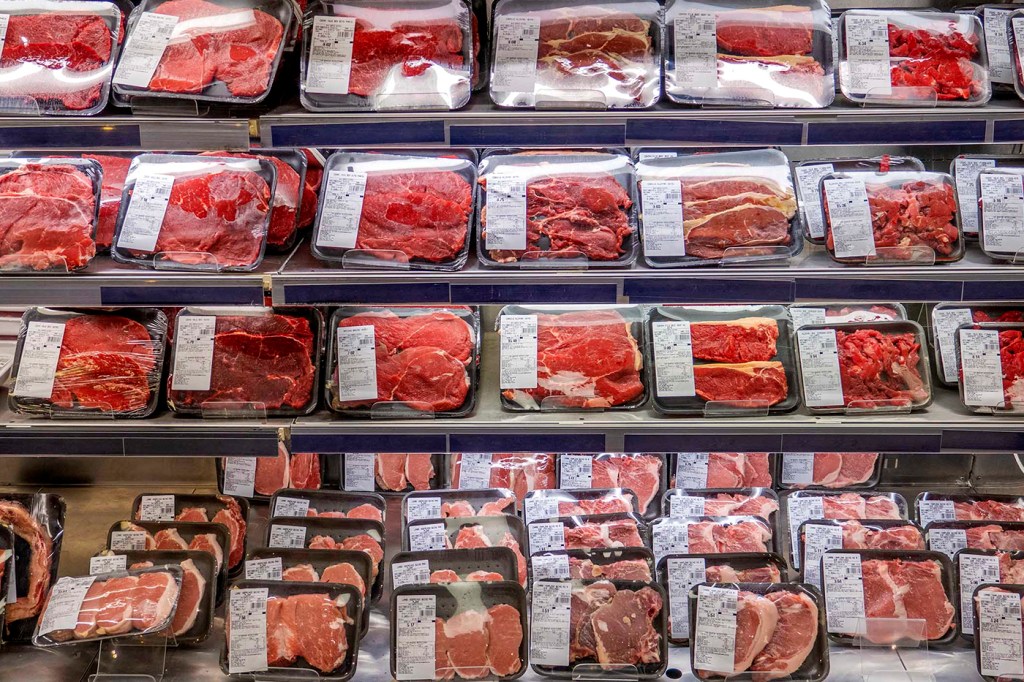What is bladed beef? Mechanically tenderized steaks shouldn’t be eaten rare, food policy expert explains

Getty Images
For many steak lovers, nothing says summer like a tender slice of beef seared to a dark gloss on the outside while remaining juicy red on the inside.
But when it comes to steaks and roasts labeled “blade tenderized” or “mechanically tenderized,” rare is not the best option, says Northeastern food policy expert Darin Detwiler.
People who consume mechanically tenderized steaks rare are more susceptible to developing food-borne illness from E. coli or salmonella contamination, he says.
Consumers can’t tell by looking at beef products whether they are blade or mechanically tenderized unless they read the package label, which the U.S.Department of Agriculture started requiring in 2016.
There is no requirement for restaurants to inform customers whether their steak has been tenderized in the food production process, says Detwiler, an assistant teaching professor.

“Mechanically tenderized beef is beef that has been pierced with blades or needles to break down the muscle fibers and make the meat more tender,” he says.
Dozens or even hundreds of needles can be used, Detwiler says.
“This process is also known as blade tenderization or needle tenderization. The process allows stores to sell cuts of meat that might otherwise be tough and less desirable.”
“Mechanically tenderized beef can pose a food safety risk because the process of piercing the meat with blades or needles can push surface bacteria into the interior of the meat,” Detwiler says.
“This can include harmful bacteria like E. coli or salmonella, which are typically found on the surface of the meat,” he says.
“Once the bacteria are inside the meat, they can survive even if the outside is cooked thoroughly. So when it comes to food safety, mechanically tenderized beef is much like ground beef,” meaning it needs to be cooked thoroughly.
As with hamburger, Detwiler suggests treating tenderized steaks until they reach an internal temperature of 160 degrees. Alternatively, as the USDA advises, they can be cooked to a temperature of 145 with a three-minute rest time.
Blade tenderized or mechanically tenderized beef will come with specific cooking instructions on the label, says Detwiler. His work as a special adviser to the U.S. secretary of agriculture on meat and poultry issues helped raise awareness of the risks of mechanically tenderized beef and led to regulations for grocery store labeling.
“Between 2000 and 2009 there were five documented outbreaks of E. coli specifically linked to mechanically tenderized beef in the U.S., which sickened 174 people and killed one consumer,” Detwiler says.
Featured Posts
Canada began requiring labeling requirements for bladed or mechanically tenderized beef from the U.S. in 2014, though the U.S. didn’t follow suit for two more years, he says.
But restaurants are still not required to tell customers ordering their beef to be cooked rare whether the steak has been mechanically tenderized, Detwiler says.
“It is impossible to see this with the naked eye,” he says. “One would need to ask the server/cook at the restaurant — and even insist on the minimum cooking temperature.”
A Consumer Reports article says that asking restaurant servers whether beef is mechanically tenderized “can help raise awareness of customers’ concerns about this safety issue and perhaps increase public pressure for package labeling and disclosure on restaurant menus.”
“But for now, the best way to cut your risk is to order beef well done,” the article says.
Well done steak is cooked to a temperature of 160 degrees and has little or no pink in the center. Medium well done is cooked to 150 with a slightly pink center; medium to 145 with a warm pink center; medium rare to 135 with warm red center; and rare to 125 with a cool red center, according to a certified Angus beef site.
The USDA advises all beef products be cooked to at least 145 degrees, adding three minutes of rest time for bladed or mechanically tenderized steaks. The temperature of the meat continues to rise during the resting period.
Detwiler advises consumers to use a food thermometer to check the internal temperature of the meat to make sure it has reached a safe internal temperature throughout.
The people most at risk of food-borne illness from E. coli and salmonella are pregnant mothers, children, the elderly and people with compromised immune systems, says Detwiler, who became an advocate for food safety after the death of his 16-month-old son Riley from E. coli poisoning in 1993.
He says people who have nausea, vomiting, diarrhea or fever and suspect food-borne illness should consult a health care provider immediately. “E. coli infections can be serious and should not be taken lightly,” Detwiler says.











